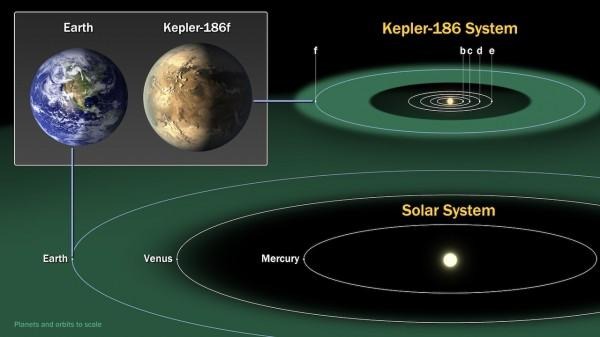NASA Has Found The First Potentially Habitable Earth-Cousin
NASA's Kepler Space Telescope has made a planet-spotting breakthrough, catching sight of the first Earth-size planet orbiting a star in the so-called "habitable zone" where liquid water could be supported. Dubbed Kepler-186f, and around 500 light years away from our own Earth, the new planet is found in the constellation Cygnus; however, while it may be in the habitable zone in theory, it would be dimmer and probably cooler on the surface than Earth is.
That's because of the size of the zone, and the fact that Kepler-186f is at the very outer edge of it, orbiting its star once every 130 days. It gets around a third of the solar energy that Earth does; NASA says that its brightest light is only the equivalent of Earth an hour before sunset.

Nonetheless, the discovery has left scientists on the Kepler project excited, and pushed Kepler-186f to near the top of the list for potentially-habitable planets NASA aims to explore with future missions. They'll include the Transiting Exoplanet Survey Satellite and the James Webb Space Telescope, which will each examine rocky exoplanets to try to figure out if they have atmospheres that could support life.
That's an important distinction, since just because a planet is in the habitable zone and could support water, it doesn't mean it necessarily does.
"Kepler-186f can be thought of as an Earth-cousin rather than an Earth-twin" research scientist Thomas Barclay said of the discovery. "It has many properties that resemble Earth." However, he pointed out, the actual temperature will depend on the atmosphere there.
SOURCE NASA
